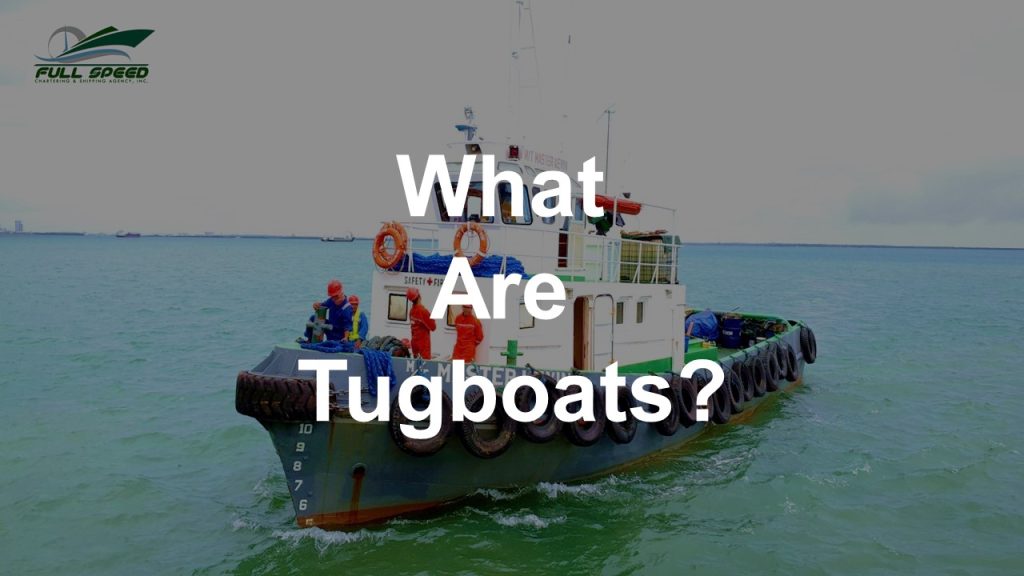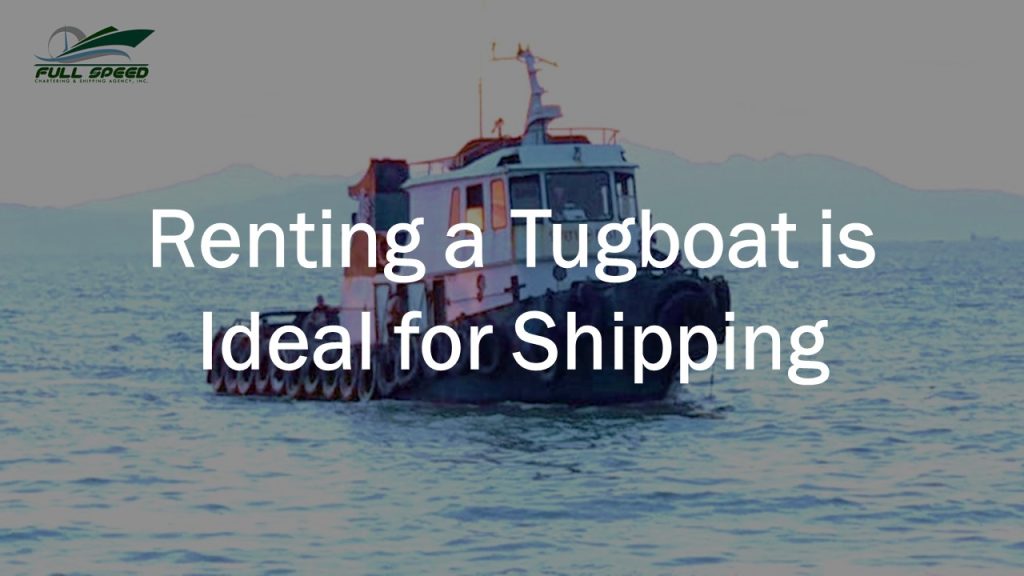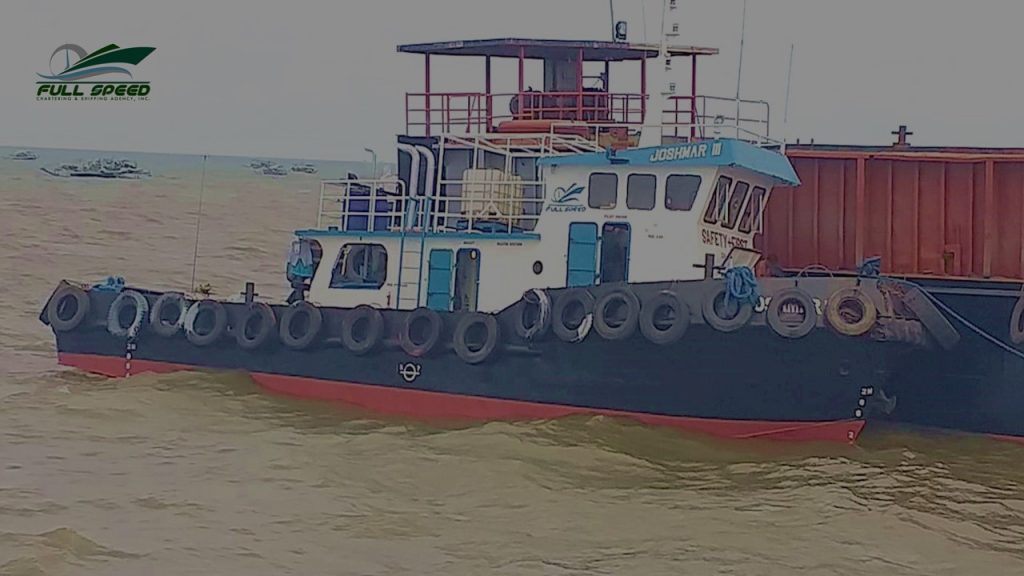Cruise ships, often referred to as floating cities, are marvels of engineering and luxury that capture the imagination of travelers worldwide. With their towering decks, opulent amenities, and capacity to carry thousands of passengers, these behemoths dominate the seas. However, behind the glitz and glamour lies a lesser-known secret: cruise ships rely on tugboats for maneuverability in tight spaces and to ensure safe departures and arrivals at ports. While it may seem counterintuitive that such colossal vessels need assistance from smaller boats, the role of tugboats in guiding these giants through treacherous waters is crucial to their smooth operations. In this article, we will delve into the reasons why cruise ships need tugboats and explore the intricate dance between these magnificent floating hotels and their humble but indispensable companions.
Click here to view our rental tugboats in the Philippines.
The Importance of Tugboats in the Philippine Cruise Industry
Tugboats play a crucial role in the Philippine cruise industry, serving as unsung heroes behind the scenes. While cruise ships are built for luxury and comfort, they are not always designed with maneuverability in mind. This is where tugboats come into play, expertly guiding these massive vessels through narrow channels and tight docking spaces that would otherwise be impossible to navigate.
Another vital function of tugboats is to provide additional safety measures during inclement weather or emergency situations. The Philippine archipelago is no stranger to sudden storms and challenging sea conditions, making the role of tugboats even more critical. These small but sturdy boats can provide assistance and stability to large cruise liners when facing rough seas or erratic winds, ensuring the safety of passengers and crew onboard.
Moreover, tugboats facilitate efficient logistics operations within the cruise industry by assisting with cargo loading and unloading processes. With their powerful engines and ability to maneuver precisely, these mighty boats ensure a smooth flow of supplies between ports, allowing for seamless turnaround times between cruises. Additionally, tugboats can also transport passengers from shore to ship when smaller ports do not have adequate facilities for larger vessels.
While often outshone by their grandiose counterparts at sea, tugboats are indispensable assets in the success of the Philippine cruise industry. From aiding large ships in navigating constrained waterways to providing vital support during adverse weather conditions, these trusty boats keep both passengers and crew safe at all times.
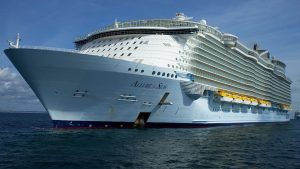
What are Tugboats? What are the Applications?
Tugboats, also known as towboats or pusher boats in the Philippines, are powerful and versatile vessels designed to assist larger ships in maneuvering through ports, harbors, canals, and other narrow waterways. These small but mighty boats are equipped with powerful engines and sturdy hulls to provide the necessary pulling or pushing force required by larger ships that may be unable to navigate safely on their own. While they may seem relatively small compared to massive cruise liners or cargo vessels, tugboats pack a punch when it comes to their towing capacity.
The applications of tugboats extend far beyond simply helping large ships move from one place to another. In addition to assisting with docking and undocking operations for cruise liners in the Philippines, tugboats play an essential role in salvage operations during maritime emergencies. They can swiftly respond to grounded or distressed vessels and aid in their recovery or rescue efforts. Tugboats in Cavite, Manila, Cebu, Subic Bay, Davao, Batangas, and Navotas are also used for firefighting purposes due to their ability to pump high volumes of water quickly. Moreover, these robust vessels can be modified for various tasks, such as ice-breaking in cold climates or oil spill containment during environmental disasters.
While tugboats may not often steal the spotlight during discussions about maritime transportation systems, they serve as crucial support vessels that ensure efficient port operations and safety at sea. From aiding the movement of massive cruise ships within the Philippines’ waters to providing emergency response capabilities during crises like grounding incidents or oil spills, tugboats certainly earn their keep on the waterways around the world.
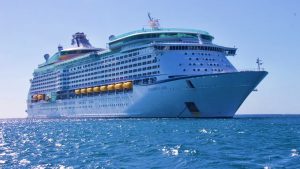
Maneuverability and Safety: A Necessity for Cruise Ships in the Philippines
Maneuverability and safety are critical aspects to consider when it comes to cruise ships operating in the Philippines. With their numerous islands, shallow waterways, and unpredictable weather conditions, these vessels require a high level of agility to navigate effectively. Tugboats play an indispensable role in ensuring that these mammoth structures can maneuver safely through narrow channels and busy ports.
One of the key challenges faced by cruise ships in Philippine waters is restricted access due to shallow harbors or ports. Tugboats, with their compact size and powerful engines, provide the necessary assistance for these massive ships to dock safely in deeper waters. They assist in guiding the vessel into position and help control its movement during berthing, minimizing the risk of accidents or damage caused by unexpected shifts in wind or currents.
Moreover, tugboats in the Philippines offer an added layer of safety during emergency situations. In case of engine failure or other technical issues on board a cruise ship, tugboats are readily available for immediate assistance. They can quickly tow the ship away from potential hazards such as reefs or coastlines, preventing further damage and ensuring prompt rescue operations if needed.
In conclusion, maneuverability and safety are non-negotiable factors when discussing cruise ship operations in the Philippines. The presence of tugboats plays a vital role in ensuring smooth navigation through challenging waters while also providing essential backup support during emergencies.
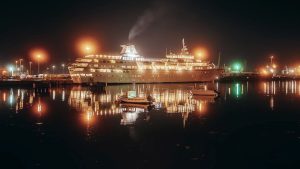
Emergency Situations: Tugboats to the Rescue in the Philippines
One of the most important roles that tugboats play in the Philippines is their involvement in emergency situations. These powerful vessels are equipped to handle various types of emergencies, from rescuing stranded boats to providing assistance during natural disasters. In a country prone to typhoons and other extreme weather events, having tugboats readily available is crucial for ensuring the safety of both cruise ships and local communities.
During typhoons or severe storms, cruise ships often need assistance navigating through treacherous waters. Tugboats are instrumental in these situations, as they can help guide the larger vessel safely through the storm. Their compact size and maneuverability allow them to provide much-needed stability and control when winds and currents become a challenge.
In addition to guiding ships through rough waters, tugboats also play a key role in rescue operations. They can quickly respond to distress calls from stranded boats or individuals at sea, providing them with immediate assistance until official rescue teams arrive at the scene. Tugboats are equipped with specialized equipment such as life rafts, life jackets, and medical supplies, making them well-prepared for emergency situations on the water.
Having tugboats readily available in the Philippines is not just beneficial for cruise ships but also plays a crucial role in ensuring maritime safety during emergency situations. With their agility and capability to navigate challenging waters, these powerful vessels contribute significantly to protecting both lives and property during crises such as severe storms or other unexpected incidents at sea.
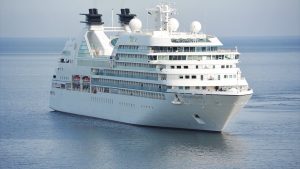
Docking and Port Operations: Tugboats’ Essential Role in the Philippines
Tugboats play a vital role in docking and port operations in the Philippines, ensuring the smooth and safe arrival of cruise ships. With its archipelagic nature, the country presents unique challenges that require expert handling. Tugboats assist in maneuvering large cruise ships through narrow channels and tight spaces, particularly in crowded ports like Manila.
Moreover, tugboat operations in the Philippines have evolved to meet international standards, providing advanced capabilities for emergency situations. These vessels are equipped with powerful engines and state-of-the-art navigation systems to handle any unforeseen circumstances that may arise during docking or departure. The presence of highly skilled local tugboat crews ensures an additional layer of safety as they possess extensive knowledge of Philippine waters.
Additionally, promoting sustainability is another key aspect where tugboats play a significant role. With efforts towards reducing emissions and protecting marine life gaining momentum worldwide, tugboats have adapted by implementing cleaner technologies such as low-sulfur fuels and energy-efficient measures without compromising their operational efficiency.
The essential role of tugboats in docking and port operations cannot be overstated when it comes to cruise ships visiting the Philippines. From aiding maritime maneuvers to upholding safety standards and embracing sustainable practices, these trusty vessels are truly indispensable for maintaining smooth travel experiences while preserving our oceans’ health.

The size and weight of cruise ships in the Philippines
The size and weight of cruise ships in the Philippines is a topic that often goes overlooked, but it plays a crucial role in understanding why tugboats are necessary. Cruise ships in the country can range from small vessels accommodating a few hundred passengers to massive behemoths capable of carrying thousands. The size of these ships not only impacts their ability to navigate through narrow waterways and tight harbors but also affects the infrastructure needed to support them.
A common misconception is that larger ships equate to more stability, yet the opposite holds true. As cruise ships increase in size, they become more susceptible to factors such as windage and wave action. This vulnerability necessitates the use of tugboats during berthing and unberthing procedures. Tugboats provide an extra layer of control, allowing for precise maneuvers even in adverse conditions. Without tugboat assistance, docking large cruise ships would be an arduous task prone to errors and safety risks.
Moreover, it’s essential to consider the weight distribution of these colossal vessels. With multiple decks housing various amenities such as restaurants, pools, and theaters, maintaining proper equilibrium is vital for passenger safety and comfort. Tugboats assist by applying lateral forces at strategic points during docking or undocking operations, ensuring that massive cruise liners remain balanced throughout these processes.
Understanding the implications of size and weight helps shed light on why tugboats are indispensable when it comes to maneuvering cruise ships within Philippine waters.
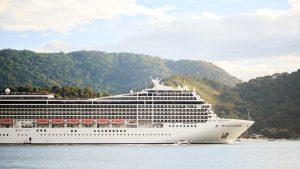
Assistance during docking and undocking procedures in the Philippines
Assistance during docking and undocking procedures is crucial for cruise ships navigating the waters of the Philippines. The archipelagic nature of the country, with its numerous islands and diverse coastlines, presents unique challenges for these mammoth vessels. Tugboats play a vital role in ensuring a smooth and efficient arrival and departure process.
One key reason why cruise ships require tugboat assistance is the presence of shallow waters near coastal areas. These areas often have narrow channels that are inaccessible to large vessels, making it difficult for cruise ships to maneuver safely on their own. Tugboats provide the necessary power and control to help guide them through these tight spaces, mitigating risks such as grounding or collisions.
Furthermore, variables like strong currents, unpredictable weather conditions, and fluctuating water levels add another layer of complexity to docking and undocking procedures in the Philippines. Tugboats act as reliable partners for cruise ships by providing additional propulsion force when needed, enabling precise maneuvers in challenging environments. They offer increased stability during critical moments when wind or current might affect ship operations.
Tugboat assistance is indispensable in ensuring safe and successful docking and undocking procedures for cruise ships operating in Philippine waters. Their valuable support helps navigators overcome unique obstacles tied to geography, shallow waters near coastlines, unpredictable weather conditions, and strong currents—all factors that demand expert knowledge and experience beyond what individual vessel crews possess alone.
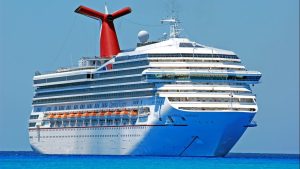
Cost-effectiveness and efficiency of tugboat services in the Philippines
Tugboat services are an indispensable part of the maritime industry in the Philippines, and for good reason. When it comes to cost-effectiveness and efficiency, these powerful vessels play a crucial role in ensuring smooth sailing for cruise ships navigating through the country’s waters.
One important aspect to consider is fuel consumption. Cruise ships consume vast amounts of fuel during their voyages, but with the assistance of tugboats, they can maneuver more efficiently by relying on their own engines less frequently. By hitching a ride with a tugboat, cruise ships can save on fuel costs and reduce their carbon footprint. Additionally, tugboats provide essential support during docking and undocking maneuvers, facilitating quicker turnarounds for cruise ships that need to get back on schedule.
Moreover, tugboat services offer an extra layer of safety for both cruise ship passengers and crew members alike. The challenging conditions often present in Philippine waters, such as strong currents or narrow channels, can be navigated more safely using the expertise of skilled tugboat operators. This not only saves time but also minimizes the risk of accidents or incidents that could damage valuable cruise ship infrastructure.
When considering cost-effectiveness and efficiency in the context of tugboat services in the Philippines, it becomes clear that these vessels are vital to maintaining smooth operations within the maritime industry.

Are You Looking for Tugboats for Your Cruise Ships in the Philippines
Full Speed Chartering and Shipping Agency, Inc. (FSCSAI) is the answer to all your tugboat needs when it comes to cruise ships in the Philippines. With their cost-effective solutions, they ensure smooth operations and safe maneuvering for cruise ships of all sizes. Tugboats in the Philippines play a crucial role in assisting cruise ships during docking, undocking, and navigation through narrow channels or congested port areas.
- Email us: info@fullspeedchartering.com
- Facebook Messenger: Click here
- Click here to inquire
What sets FSCSAI apart from other chartering agencies is its commitment to providing highly skilled and experienced crew members who understand the complexities of handling cruise ships in various conditions. Their tugboats are equipped with state-of-the-art technology and powerful engines that allow them to handle even the largest vessels with ease.
Having reliable tugboats at hand not only enhances safety but also improves efficiency for both passengers and crew members in Manila, Cebu, Davao, Zambales, Batangas, Bataan, Palawan, and Cagayan de Oro . By partnering with FSCSAI, cruise ship operators can have peace of mind knowing that their vessels are in capable hands, ensuring a smooth sailing experience for everyone on board.
If you are looking for tugboats for your cruise ships in the Philippines, Full Speed Chartering and Shipping Agency, Inc. should be your top choice. Their cost-effective solutions, combined with their highly skilled crew members and advanced technology, make them the ideal partner for a seamless cruising experience. Trust FSCSAI to provide you with reliable tugboat services that will enhance safety, efficiency, and overall customer satisfaction on your cruises.
Summing Up: The Indispensable Support of Tugboats in the Philippines
In conclusion, it is clear that tugboats play an indispensable role in supporting the operations of cruise ships in the Philippines. Not only do they provide essential assistance in navigating through tight or crowded waters, but they also ensure the safety and security of these colossal vessels. Their powerful engines and maneuverability make them ideal for guiding cruise ships into ports and berths with utmost precision.
Moreover, tugboats are crucial in times of emergencies or adverse weather conditions. They can swiftly respond to distress calls and provide much-needed support to cruise ships during evacuations or mechanical failures. With their expertise in towing and pushing large vessels, tugboat crews demonstrate their skillful navigation prowess on a daily basis.
And let’s not forget about the economic benefits brought about by tugboats as well. The presence of these reliable companions allows larger cruise ships to enter smaller ports, generating revenue not only for cruise companies but also for local businesses that rely on tourism. Tugboats are often the unsung heroes behind this flourishing industry, quietly working behind the scenes to ensure smooth sailing and unforgettable experiences for all passengers.
In short, while some may overlook the significance of these small yet mighty vessels, tugboats undoubtedly form an integral part of the maritime infrastructure in the Philippines. Their unwavering support keeps our shores busy with magnificent cruisers from around the world while ensuring safe travels and unforgettable memories for all who come aboard.

